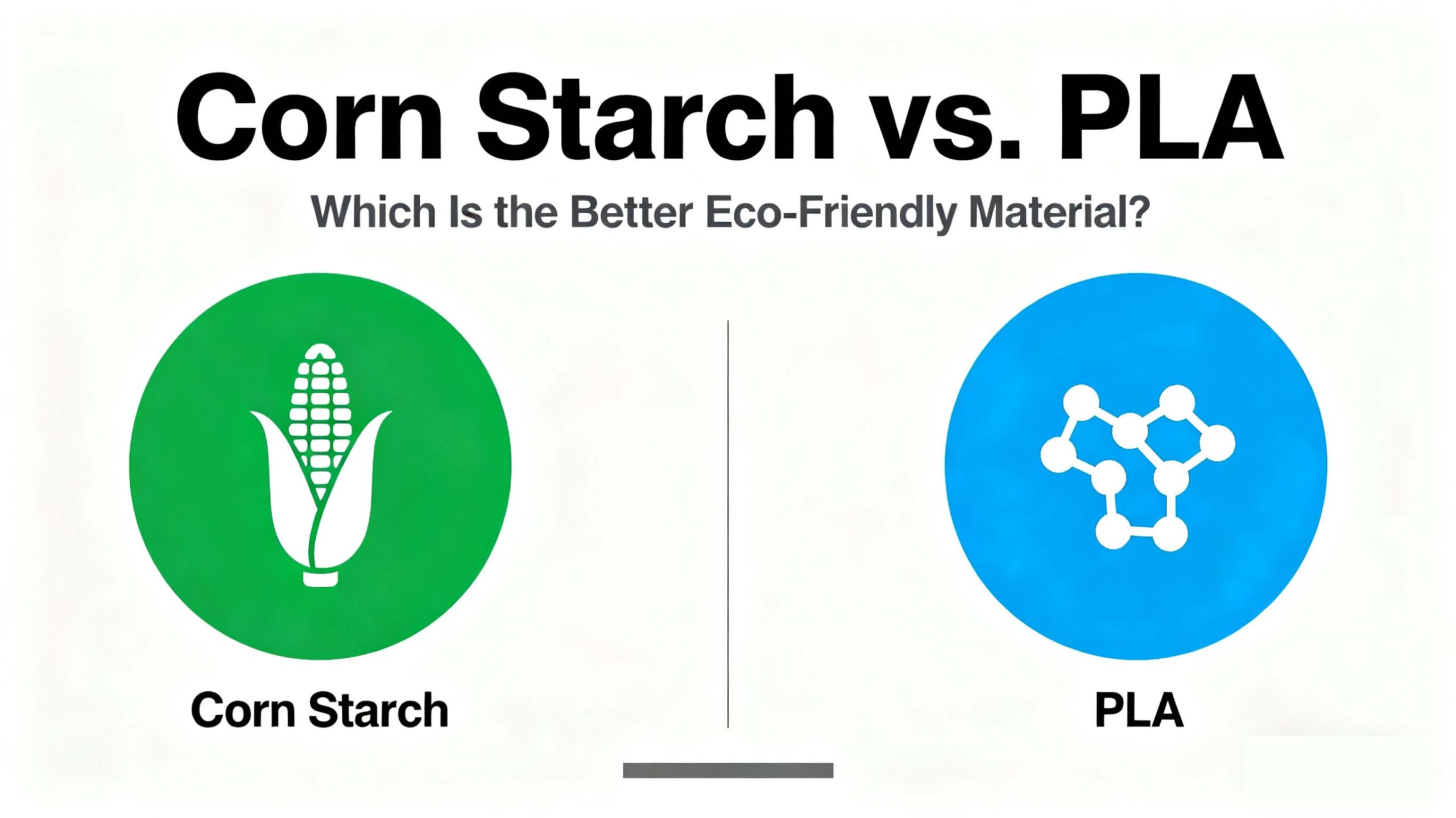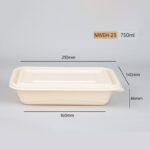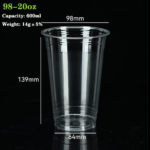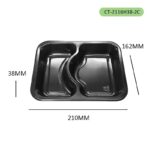Quick Summary:
This article compares corn starch and PLA as leading eco-friendly packaging materials. It explores their origins, biodegradability, compostability, heat resistance, cost, and market suitability. Corn starch performs best for hot food containers and regions without composting infrastructure, while PLA excels in transparent cups and certified markets with industrial composting. Together, they represent complementary solutions, with DASHAN offering reliable corn starch product lines to meet global sustainability needs.
Introduction
In today’s sustainability-driven world, businesses and consumers are increasingly looking for alternatives to petroleum-based plastics. Among the most popular solutions are corn starch materials and PLA (Polylactic Acid). Both are derived from renewable resources, both are marketed as biodegradable or compostable, and both are widely used in tableware, takeaway packaging, and single-use products.
Yet, while corn starch and PLA share a common reputation as “green materials,” they differ significantly in raw materials, production processes, environmental performance, functionality, cost, and end-of-life options. For foodservice operators, brand owners, and policymakers, the question becomes: which is the better eco-friendly material?
This article provides a detailed, evidence-based comparison, combining expert insights, scientific data, real-world case studies, and user feedback, to help you make informed decisions.
Understanding the Basics
What Is Corn Starch Material?
Corn starch packaging is made from corn kernels, specifically the starch component. After extraction and modification, the starch is processed through heat and pressure to create plates, trays, clamshells, and food containers.
-
Key Applications: Disposable clamshell boxes, compartment trays, bowls, plates.
-
Advantages: Derived from abundant agricultural resources, relatively low cost, opaque structure ideal for hot meals.
-
Limitations: Less transparent, limited heat resistance above 90°C, performance depends on coatings.
What Is PLA (Polylactic Acid)?
PLA is a bioplastic made through fermentation: plant sugars from corn or sugarcane are converted into lactic acid, which is then polymerized into a thermoplastic resin. PLA is versatile and can be processed by injection molding, extrusion, and thermoforming.
-
Key Applications: Cold drink cups, lids, clear clamshells, thin films, straws.
-
Advantages: Transparent, good rigidity, well-established certification frameworks.
-
Limitations: Requires industrial composting to fully degrade, poor performance with high-heat food.
Production Process Comparison
Corn Starch
-
Milling corn kernels to extract starch.
-
Physicochemical modification to improve water and oil resistance.
-
Forming under heat and pressure into clamshells, plates, and trays.
-
Sometimes coated with biodegradable barriers for enhanced performance.
PLA
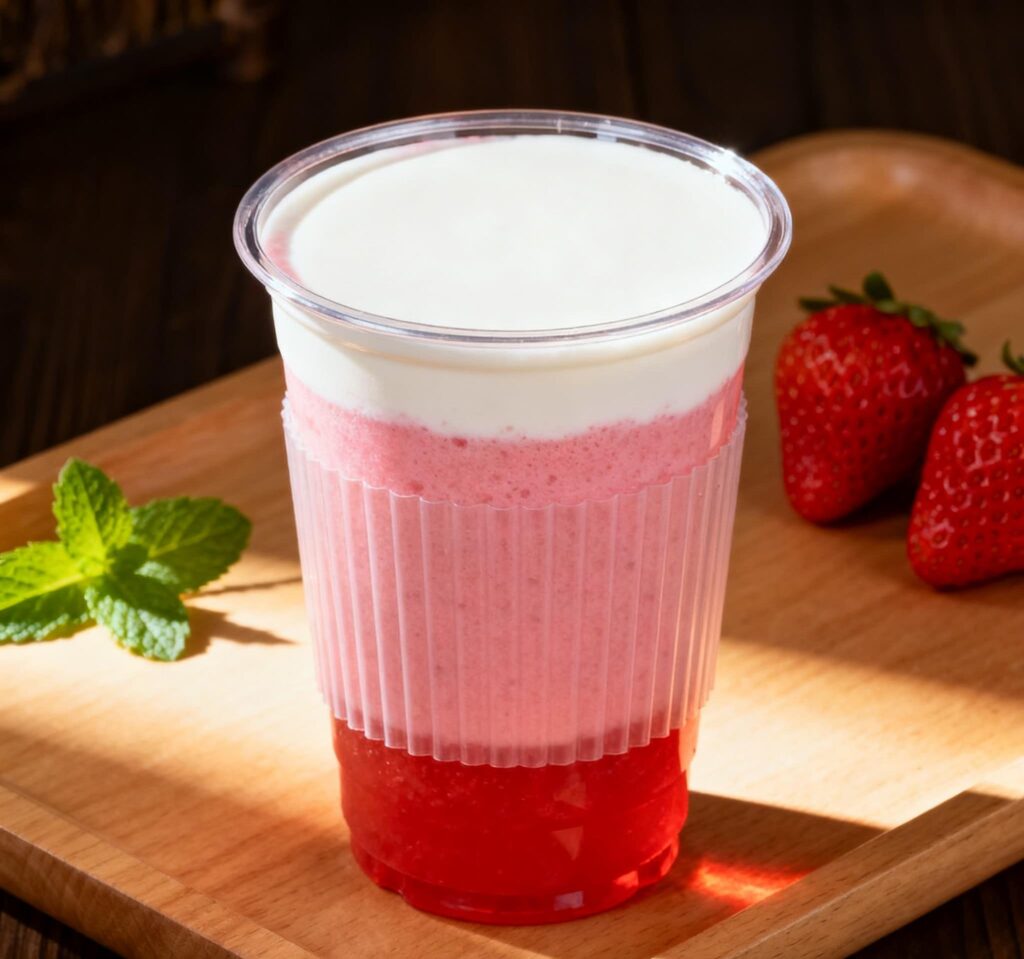
-
Fermentation of corn or sugarcane sugars into lactic acid.
-
Polymerization into PLA resin pellets.
-
Conversion via injection molding or extrusion into cups, lids, straws, and films.
Key Differences:
-
Corn starch materials involve simpler processing but rely on bulk agricultural inputs.
-
PLA involves advanced polymer chemistry but allows for more versatile product forms, especially transparent packaging.
Environmental Performance
Biodegradability
-
Corn Starch: Many products partially biodegrade under natural conditions, but performance depends on additives.
-
PLA: Requires industrial composting conditions (60°C, controlled humidity, oxygen) to break down within 90–180 days. In natural soil or marine environments, degradation is slow.
Compostability and Certifications
-
Corn Starch: May be compostable depending on formulation; easier acceptance in Asian markets.
-
PLA: Commonly certified under ASTM D6400 (US) and EN 13432 (EU). Recognized by the Biodegradable Products Institute (BPI).
Expert Insight:
Dr. Helen Martinez, a packaging sustainability researcher, notes:
“The key distinction is composting infrastructure. PLA requires industrial facilities, while corn starch can partially degrade in natural conditions. However, only certified products guarantee consistent compostability outcomes.”
Functional Performance
Heat Resistance
-
Corn starch tableware typically withstands temperatures up to ~90°C, suitable for hot meals and microwave reheating.
-
PLA softens at ~55–60°C, making it ideal for cold drinks but unsuitable for hot foods or beverages.
Transparency
-
Corn starch items are opaque, with a natural off-white color.
-
PLA is transparent, resembling traditional PET plastic, making it highly suitable for cold drink cups and clear lids.
Grease and Moisture Resistance
-
Corn starch requires coatings for improved oil resistance.
-
PLA inherently resists moisture but is brittle under heat.
User Feedback:
Restaurant operators report that corn starch trays perform well in buffet settings with hot meals, while PLA cups excel for iced beverages in coffee shops and quick-service restaurants.
Market Trends and Policies
European Union
The EU’s Single-Use Plastics Directive bans plastic cutlery, plates, and polystyrene packaging. Both corn starch and PLA are viable replacements, but PLA’s industrial compostability is more aligned with European waste frameworks.
North America
The U.S. market increasingly recognizes BPI-certified compostable packaging, favoring PLA cups and utensils. However, consumer demand for home-compostable alternatives boosts interest in corn starch materials.
Asia-Pacific
China, Japan, and Southeast Asian markets show strong demand for corn starch-based packaging, often marketed as “biodegradable” without requiring specialized composting infrastructure.
Cost and Business Considerations
-
Corn Starch: Typically lower cost in bulk due to abundant raw materials.
-
PLA: Historically higher cost, but prices are decreasing as global production scales.
-
Business Perspective:
-
Corn starch is attractive for hot foodservice applications.
-
PLA is preferred for beverages, branding visibility, and export markets requiring strict certifications.
-
Case Studies & Expert Opinions
Case Study 1: Quick-Service Restaurant in China
A catering chain switched from PP clamshells to corn starch-based trays. Feedback indicated strong consumer acceptance due to “eco-friendly” branding and reliable heat resistance.
Case Study 2: European Coffee Chain
A chain adopted PLA cold cups certified under EN 13432. The switch aligned with local composting infrastructure and regulations, with customers appreciating the transparent, “plastic-like” look.
Expert View
Packaging analyst James O’Connor explains:
“Corn starch works best in regions without industrial composting facilities, while PLA thrives where composting infrastructure is robust. The two materials are not direct competitors but complementary solutions.”
DASHAN’s Role in Eco-Friendly Solutions

DASHAN is a professional manufacturer specializing in sustainable packaging. Its corn starch product line includes clamshells, compartment trays, plates, and bowls designed to withstand hot and greasy foods while maintaining compostability standards.
-
Product Highlights:
-
8″ 3-compartment clamshell (LB-83) for balanced meals.
-
Corn starch trays for catering and buffet services.
-
Plates and bowls suitable for restaurants, canteens, and takeaways.
-
-
Certifications: Compliant with international food-contact and eco-friendly standards.
-
Advantage: Reliable, scalable production capacity for global customers.
By offering starch-based packaging alongside other materials like PLA and CPET, DASHAN provides holistic, flexible solutions to meet diverse market needs.
Comparative Table: Corn Starch vs. PLA
| Aspect | Corn Starch Material | PLA (Polylactic Acid) |
|---|---|---|
| Raw Material | Corn kernels (starch) | Corn, sugarcane (fermentation) |
| Transparency | Opaque | Transparent possible |
| Heat Resistance | Up to ~90°C | Softens above ~55°C |
| Compostability | Partial natural, some certified | Industrial composting required |
| Certifications | Easier in Asian markets | ASTM D6400, EN 13432, BPI |
| Cost | Lower in bulk | Higher, but falling |
| Best Use Case | Plates, trays, clamshells | Cold cups, lids, films, straws |
Conclusion
Corn starch and PLA both play essential roles in the future of sustainable packaging. Corn starch is ideal for solid foods, hot meals, and markets without industrial composting infrastructure, while PLA is better suited for cold beverages, transparent packaging, and markets with strong certification frameworks.
Rather than asking “which is better,” businesses should recognize their complementary nature. By selecting the right material for the right application, companies can reduce environmental impact, meet regulations, and satisfy consumer demand.
With its comprehensive product lines, DASHAN is well-positioned to help businesses transition to eco-friendly packaging that balances performance, compliance, and sustainability.
FAQ
1. Which is more eco-friendly: Corn Starch or PLA?
Both are eco-friendly, but in different contexts. Corn starch degrades more easily in natural settings, while PLA requires industrial composting but has stronger global certifications.
2. Can PLA biodegrade in home compost?
No, PLA needs industrial composting at high temperatures and controlled conditions to degrade effectively.
3. Are Corn Starch containers microwave safe?
Yes, most corn starch trays and clamshells are microwave safe up to around 90°C.
4. Which material is better for hot food?
Corn starch is better suited for hot foods, while PLA works well for cold drinks and clear containers.
5. How do these materials comply with EU regulations?
Both comply with the EU’s Single-Use Plastics Directive when certified. PLA often carries EN 13432 certification, while corn starch products may require additional labeling and validation.
6. What are the cost differences?
Corn starch is generally more affordable. PLA costs are falling with scale but remain higher in many markets.
7. Can these materials replace plastic entirely?
Not entirely. They are best seen as complementary solutions, each suited to specific applications.
📚 Reference Links
-
Biodegradable Products Institute (BPI) – Compostable Certification
https://bpiworld.org/ -
ASTM International – ASTM D6400 Standard Specification
https://www.astm.org/d6400-21.html -
European Standard EN 13432 – Requirements for Compostable Packaging
https://www.en-standard.eu/bs-en-13432-2000-packaging-requirements-for-composting-and-biodegradation/ -
US Environmental Protection Agency – Composting Basics
https://www.epa.gov/ -
NatureWorks – PLA Bioplastic Information
https://www.natureworksllc.com/ -
ScienceDirect – Review on Biodegradable Polymers (PLA, Starch)
https://www.sciencedirect.com/ -
Springer – Starch-Based Bioplastics Overview
https://link.springer.com/ -
MDPI – Review of PLA and Starch Biopolymers
https://www.mdpi.com/ -
Ellen MacArthur Foundation – Plastics and Circular Economy
https://ellenmacarthurfoundation.org/plastics
Disclaimer & Copyright Notice
This article is created by the Dashan Packing editorial and research team.
All information presented here is for educational and industry reference purposes only.
Some data and standards cited in this article are sourced from publicly available materials,
official regulatory documents, or third-party publications, which are properly credited where applicable.
All rights to third-party trademarks, images, and content belong to their respective owners.
If any copyrighted material has been used inadvertently, please contact us at angel@chndashan.com.
We respect intellectual property rights and will promptly remove or revise any material upon verification.


